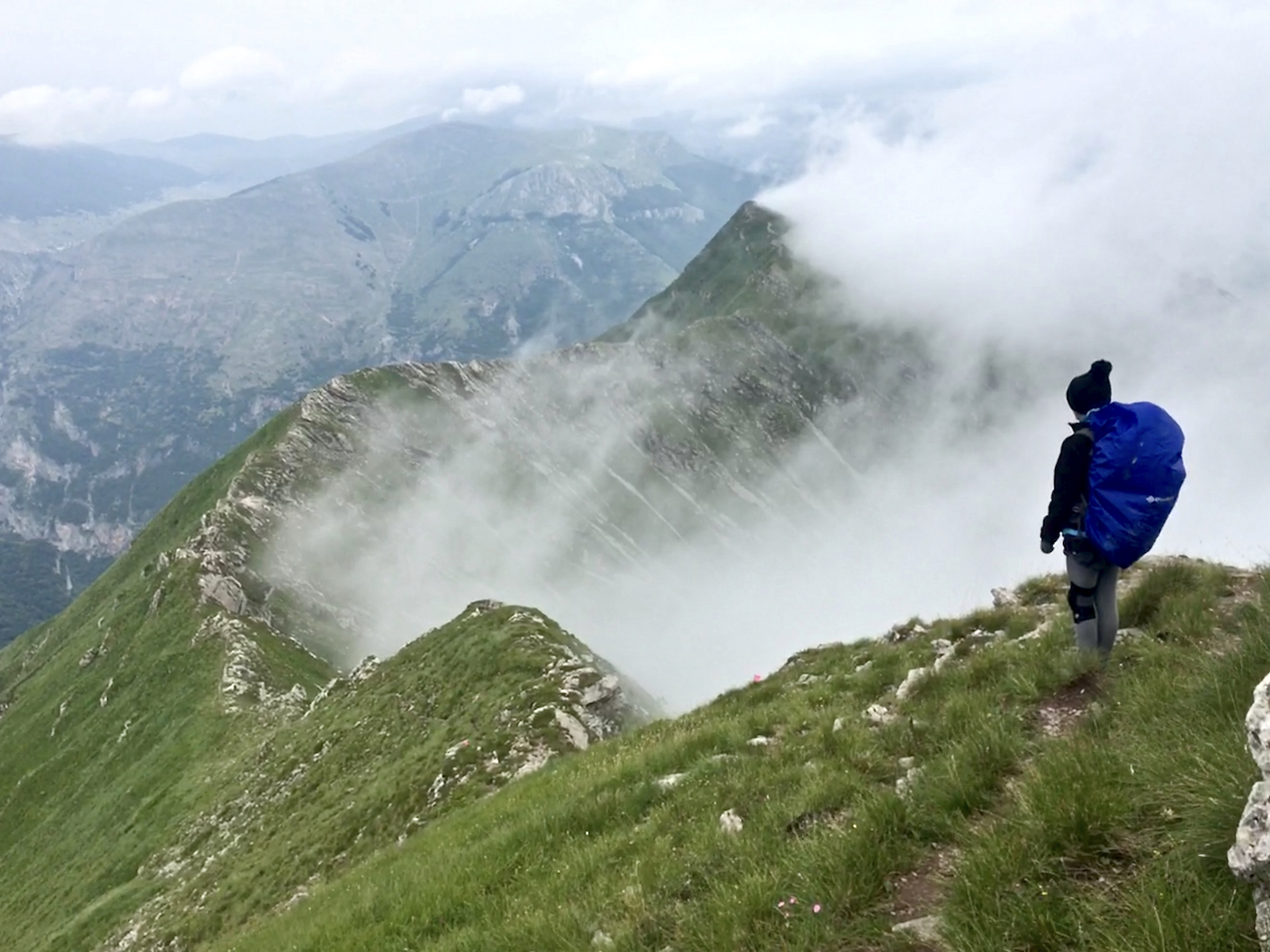
She pretended to shoot me, the woman in the front seat of the car. She turned, eyes blue and hair white, cupping her arms with an imaginary machine gun. Pfoo, she said, jerking her arms in recoil. Pfoo, pfoo. I had told her I was born in 1992, when the siege of Sarajevo began. She was bringing us to this city, the capital of Bosnia.
I shifted next to my partner, Kenzie, in the back seat, my beard dusty and clothes worn from two weeks traversing the mountains of the Balkan peninsula. We were walking a section of the Via Dinarica Trail, Europe’s newest long-distance hiking route stretching 800 miles from Slovenia to Albania. The woman’s violent mime was not surprising but articulated what bullet-chipped houses had whispered throughout forested valleys. Violence was near and recent. We communicated this with hands and gestures.
We had walked through Bosnia step-by-step at three miles an hour, the same pace at which humans spread to every corner of the earth. Rebecca Solnit, author of Wanderlust, points out that both our bodies and minds evolved at this swinging gate. “The mind,” she says, “like the feet, works at about three miles an hour.” At this pace, contemplation and observation merge, creating space for chance encounters, communication with strangers, and the occasional spontaneity to catch a ride.
“They must have lived through the siege,” whispered Kenzie before engaging in a series of gestures smattered with Bosnian phrases. The woman spoke with her husband and confirmed that they had lived in Sarajevo through the longest siege in the history of modern warfare.
Kenzie had charted our route, 150 miles from Montenegro into Bosnia. I was the dreamer who put the hike into motion. Like an itinerant few, we were drawn to this rare European wilderness, where dripping cloud forests and sunbaked plateaus shelter wolves, bears, and chamois, while cloaked nomads herd sheep from valley to peak, and pure streams glisten alongside ancient paths. Our feet led us through a vision of Europe from a distant time and the devastation of recent times.
Our first day hiking we entered the Durmitor mountains from Black Lake in Montenegro, where the mist glowed across the water under a 6 a.m. sun. We ascended quickly, bent under the weight of five pounds of peanuts, fifty tortillas, two jars of peanut butter, Nutella, forty snickers bars and several hefty sausages.
Cresting a ridge, pine forests gave way to an alpine landscape of green turf and white snow. We startled wild horses and spied a herd of deer tracing the slopes. Crossing a pass, biting wind and purple-tinged clouds fell behind, revealing icy peaks in a blue sky. The trail dropped between natural stone pillars to an emerald lake, where we made camp in the mouth of the valley. In the morning, we left this relative normality behind as we broke camp and traversed a misty plateau towards the border of Bosnia.
The next two nights we were stranded in an abandoned house near the edge of a steep gorge, huddled for warmth as we awaited the end of an incessant rain. We had arrived at sunset just as the rain began, ducking into the building for shelter. Cracked pink paint still decorated the entry, but the house was a shell without lightbulbs, doors, windows or furniture. Old cow dung made a soil across the floor. Straight pines dripped and rustled against the walls as gloom slipped seamlessly into night. Every creak in the darkness entered my imagination as the mysterious phantom lives which had animated, then fled this space. Why did they leave? The rain continued for 36 hours.
After this misty purgatory and a morning of slipping and clinging desperately to roots as our feet pondered the empty air of a yawning chasm, we stumbled onto a dam 1,100 vertical feet below. A dark figure stood in our path, tall and barrel-chested with a military haircut. Security. The skin around his eyes wrinkled in amusement.
“Kahva?” he asked. We knew that one. Coffee.
We sat on the dam, coffee warmth radiating through our hands into our chilled bodies. We were at a crossroads. To the left, our hiking path rose vertically back up the cliff. Wet rocks disappeared in clouds, obscuring a three-day wilderness of high elevation storms and ice. To the right, a road tunneled into the mountain and followed the valley.
We took the road and raised our thumbs.
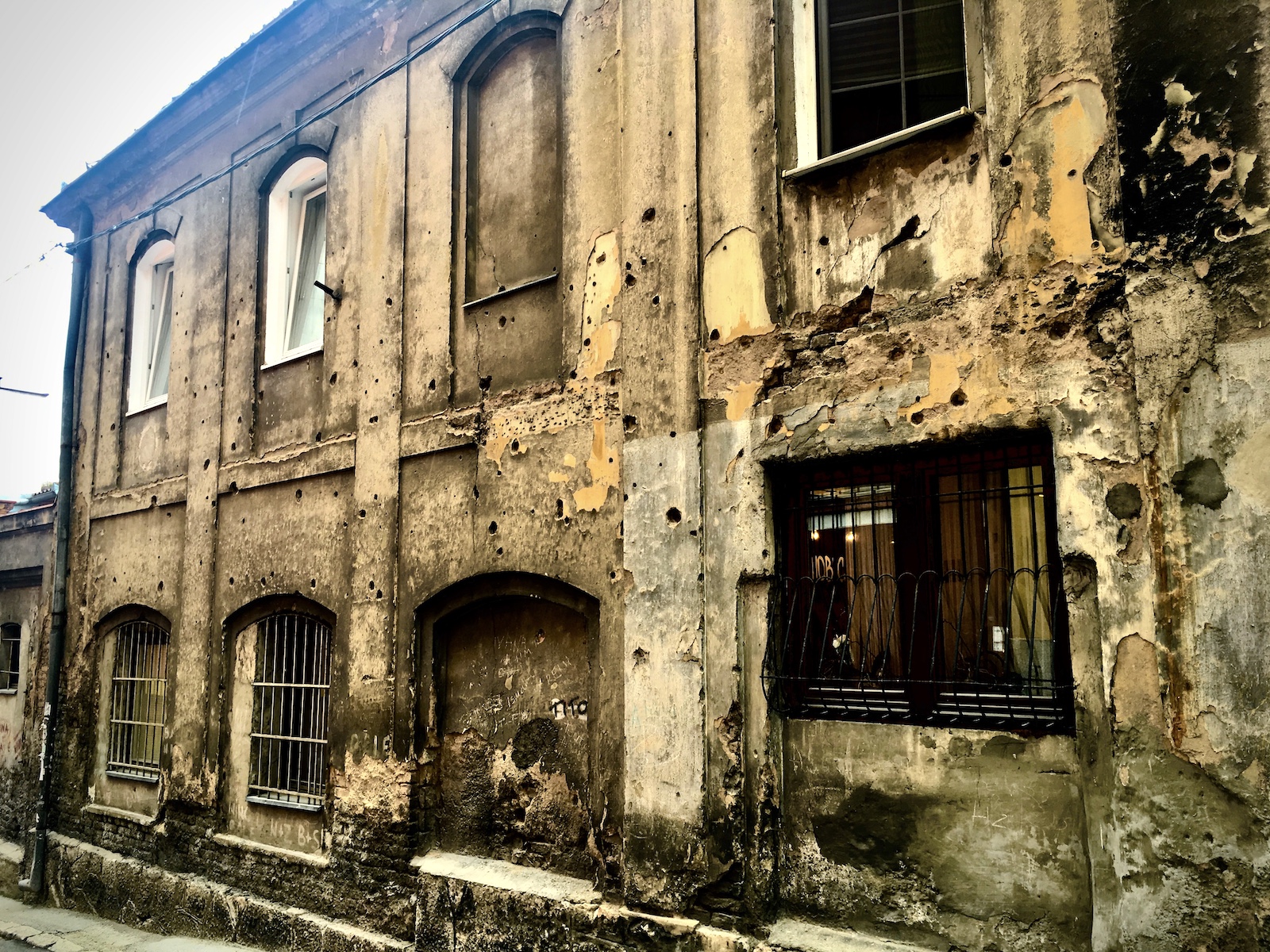
Before long, we were zooming through the canyon in a clunky sedan, speaking with a Serbian journalist who had been visiting family in Montenegro. “Before,” he said, “when we were Yugoslavia, it was all like this. Everyone made family in different regions: Slovenia, Croatia, Bosnia, Montenegro, Macedonia, Serbia. When we were under Tito, we were one.”
Tito is the man who unified the disparate regions of Yugoslavia. A guerilla fighter during World War II, he led a legendary army of men and women who would strike Nazi positions before disappearing in the misty peaks. Tito liberated the region without Russian assistance so, unlike the rest of Eastern Europe, his government did not fall behind the Iron Curtain of Soviet rule. Free from Soviet dictate, he instituted what is perhaps the most successful historical instance of a socialist regime, heralding a generation of unprecedented regional peace and prosperity. Statues, household portraits and the tones used when uttering his name almost deify the man. The shadow of this myth falls upon a darker reality, however, in which secret police imprisoned dissidents to uphold his power. Tito.
“And when he died,” said the driver, “everything fell apart.”
We crossed the border into Bosnia, and the road became rutted and bumpy as the sedan wove between mountains. When Tito died in 1980, the driver told us, politicians began to weaponize ethnicity. The Croat Catholics, Orthodox Christian Serbs and Bosnian Muslims were pitted against one another, fanning the embers of old anger which, in 1991, erupted into war.
He lit a cigarette and took a long drag.
“Look,” he pointed over a river, across the valley, where two houses occupied a green meadow within a black forest. “They may be cousins. They may be brothers. But when I was a boy, if one was Bosnian, one Serbian, they would be shooting each other.”
The cigarette sizzled with another breath. “We need to move past this.”
“People won’t move past this,” said a different driver late in the afternoon; a newlywed young man. We had been picked up, carried and dropped off by four drivers throughout the day, traveling between warm fields and verdant valleys. The newlywed brought us deeper into the mountains. He was born after the conflict. “Our generation wants to move on,” he told us.
He dropped us off in a town called Kalinovik, where we met our trail. High hills rolled towards the peaks we had circumvented that day. Lightning pulsed in those mountains as we turned and followed a dusty road in the other direction.
We stayed with a family that night, watching the World Cup on a small screen beside a wood-burning stove. Our hostess poured tea and I noticed a heavy wooden cross dangling from her neck.
The next day our feet carried us across an invisible line and we entered a world of different belief.
An Austro-Hungarian fort dominated a hill, solidifying the historical division between Christian and Muslim worlds, between the East and the West. I was reminded that this region was long a buffer zone, a convergence of worlds, where the Austro-Hungarian heritage of Vienna, Mozart and Franz Kafka met the mixed Ottoman heritage of Istanbul, Sufi philosophers and Ibn Battuta. Somewhere along the road, we passed to the other side.
Observation and contemplation merge when walking along a trail hour after hour, day after day. More than any form of travel, the pace and rhythm of moving step-by-step elicits the pulse of a place. Walking through Bosnia’s Muslim territory, I felt the region’s bleeding heart.
The signs were subtle, at first.
People were the same: tall, dark hair, striking bright eyes and reserved hospitality. An old man rumbling down a mountain on a miniature tractor offered us his umbrella with a toothless smile. Yet, in place of churches, mosques rose above village squares.
Paths were the same, winding through deep forests. Yet, across from wild strawberries, signs warned of mine fields blanketing the slopes.
Water was the same: pure and clear, drinkable without treatment. Yet, fountains were erected around the natural springs, etched with the names and ages of murdered Bosnian Muslims. The youngest victim was nine years old. For days along our path, life-giving water trickled from a memory of death.
8,000 Muslims were killed within a European safe zone during the war. U.N. peacekeepers formed a perimeter around the town of Srebrenica, protecting mostly-Muslim refugees and civilians who were fleeing the Orthodox Serbian military. The military surrounded the town and, on July 11, 1995, marched through the U.N. perimeter. Muslims were gathered and systematically killed in the largest European genocide since the Holocaust.
Later, I stood in a dim museum. The names of Muslim victims covered the wall in small font, rising from floor to ceiling, stretching down the hallway until they were lost in darkness. Small names, etched in gold, killed by Christians. As my feet carried me through this recent history, I was followed by the thought that any ideology, religious or otherwise, can be weaponized to justify violence. The oft-touted idea that Islam is inherently more violent than other religions seemed naïve in Bosnia, between landmines and strawberries as I watched the column of tiny names disappear in darkness.
And so we moved. Rain followed us, turning mountain villages into apparitions through the mist, hallucinations of life, warmth and possibility which quickly faded from view. It was difficult to disentangle whether I was viewing a state of the world or a state of my own mind.
Days later, the sun emerged as we entered a meadow of blueberries and flowers. A man was roasting a lamb over a fire. After a week of peanut butter and tortillas, my mouth watered. We approached him.
“I have 500 sheep!” he exclaimed gesturing towards the mountains. We ate one, washed it down with several beers and followed the trail through his pastures.
As we climbed, the bells and bleats of sheep followed us on the wind. We entered a sky shorn by sharp ridges, with clouds piling against northern slopes while the south stretched uninterrupted to a jagged horizon. In the distance, far below, a river cut between mountains, forming the deepest and least explored gorge in Europe.
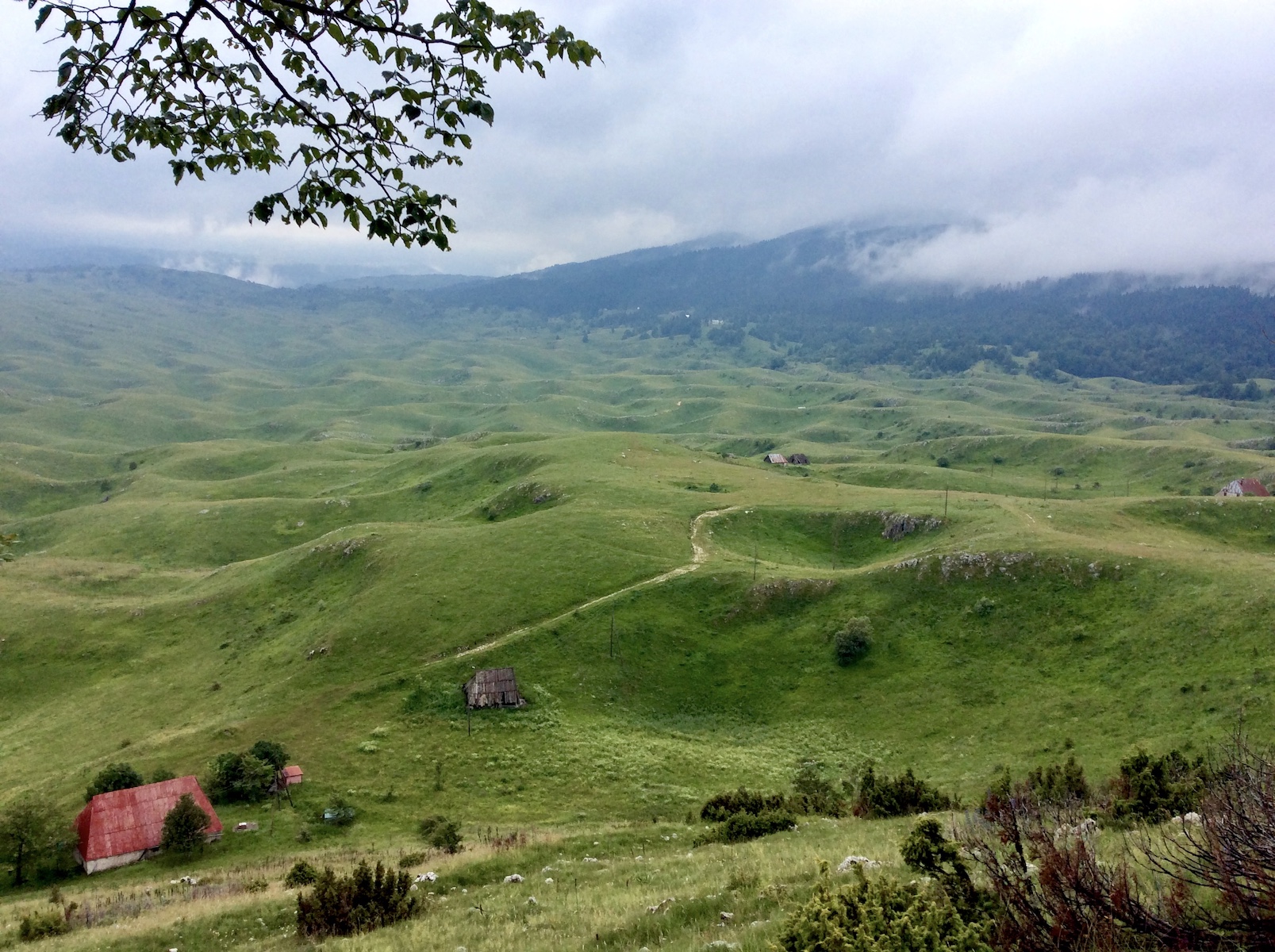
The next day we followed the lip of this gorge, gazing into its depths. The river furrowed beneath forests which rose into avalanche slopes, trees giving way to turf which softened the faces of sheer cliffs. Millions of years of stratigraphy were exposed, stones twisting and bending across a scale of time and space that humbled me, stooped under the weight of my backpack.
We spent the night in the most isolated village in Bosnia, where stone homes emerged from a highland valley, and the Milky Way formed a solid band across the sky as I closed my eyes.
A feral roar and cries of alarm shattered this peace in early morning light. Rushing outside, I found two sheep dogs locked in combat. They were massive, probably 200 pounds with long white hair matted red with blood as fangs snapped and ripped. An ear was torn, a throat mottled, an eye gouged. An elderly shepherd woman danced futilely around the fray, a colorful shawl slipping from her face as she shouted and hit them with a switch. The dogs disengaged and circled, jaws quivering, teeth bared, crisp air vibrating from growls deep in their lungs. With a roar, they slammed back together.
“Will they kill each other?” I asked a local man.
“Probably,” he replied, arms folded in cool observation. “They are brothers.”
I felt ill and helpless.
Eventually, the dogs separated. Limping, they followed the old woman, who turned her switch on a herd of sheep she was driving down a path. The dogs kept pace, aligning alongside the herd. Kenzie and I followed at a distance. Blood speckled the stones at our feet. Brothers fighting brothers.
Reaching an asphalt road, it was time for us to leave the mountains. We found a woman, white hair and blue eyes, picking herbs with her husband along the road. They agreed to bring us to Sarajevo. I told her I was born in 1992. Pfoo, the woman said. Pfoo, pfoo.
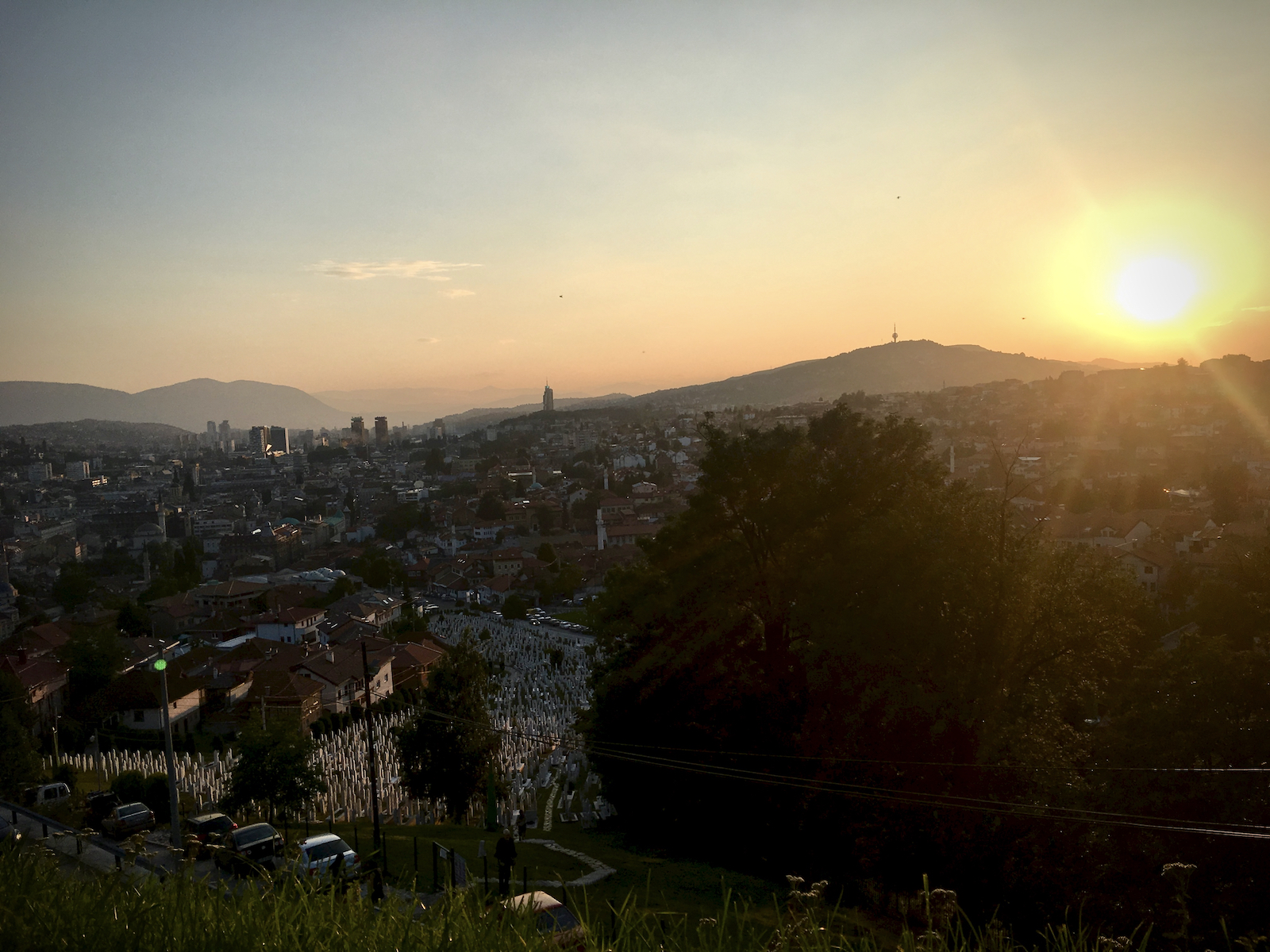
Rounding a mountain road, Sarajevo filled a depression in the land before us. A river divided the city, where colorful columns of Vienna meet the tan markets of Istanbul, the East meeting the West. Hundreds of mosques mixed with orthodox cathedrals and at sunset, the Muslim call to prayer was punctuated with Christian church bells. These sounds rose to the mountains above the city, where the Serbian military had surrounded Sarajevo for four years.
Our drivers remembered the siege. Mortar explosions and sniper fire became a part of life. Schools, hospitals and apartments were reduced to rubble. As they drove us into the city, I saw walls chipped from machine gun fire. Snipers would target water sources, our drivers said, firing on people lined at wells.
Sarajevo’s beer brewery was particularly bullet-strewn. The Muslim Ottomans had built this brewery atop a well to provide beer for their Christian subjects. During the siege, Muslims and Christians together gathered at this well, risking bullets to carry water to their families.
As the rest of the region splintered along ethnic lines, in Sarajevo, the population remained unified. In the spirit of centuries of peaceful cohabitation between Christians and Muslims, the population even managed to build a sense of normalcy through the siege. Our drivers chuckled and smiled at some of their recollections, no doubt reliving memories of underground concerts, school lessons, birthday parties, romantic affairs and marriage ceremonies which kept joy alive for four years while the city was pounded from above.
Something in this elderly couple returning to Sarajevo with smiles on their faces and baskets full of herbs drew my mind to an evening in the mountains. We were camped on the porch of a dilapidated school. Near the door, in the dust, sat a tooth. It looked human. A few bullet-sized holes punctured the cement. I felt a somber darkness as I pitched my tent before dusk.
The mountains captured a cloud, carrying it down to the school. As the sun cast its final light through the valley, the world suddenly brimmed with color and swifts emerged from their nests to spin through the glowing mist. The air was filled with orange, blue and gold, sharpening the greens of the forest, the bronze spire of a mosque and the white thrum of the river.
As we inhaled light inside a sunset cloud, the path through Bosnia seemed like a distillation of the human condition, reminding me that an undercurrent of hope and humanity flows beneath conflict and suffering. These lessons are learned at three miles an hour, step by step, with sore feet and swinging arms, at the confluence of thought and movement on the Via Dinarica trail.
Sunsets filling bullet-riddled schools, an elderly couple with fond memories of a siege and canine brothers fighting and tending sheep: the path through Bosnia seemed like a distillation of the human condition, reminding me that an undercurrent of hope and humanity flows beneath conflict and suffering.
These lessons are learned at three miles an hour, step by step, with sore feet and swinging arms, at the confluence of thought and movement on the Via Dinarica trail.

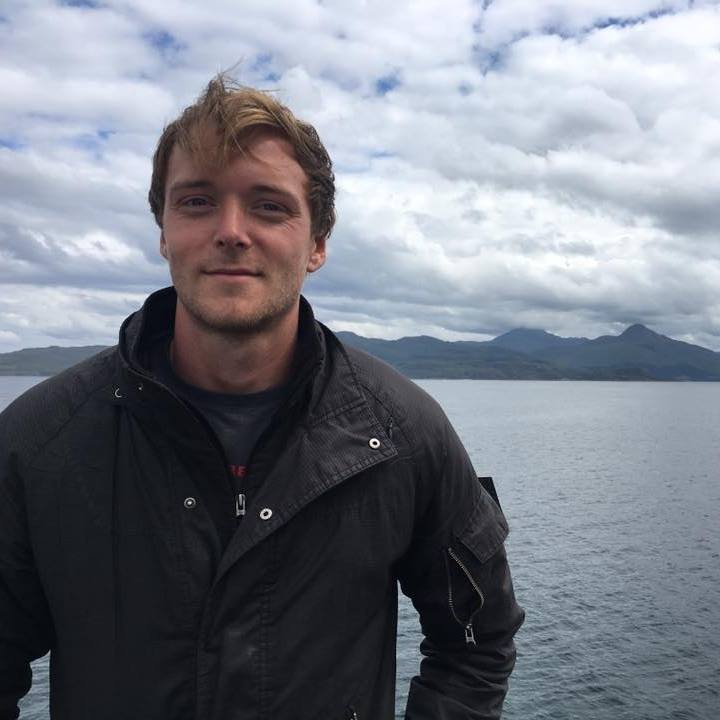 Jordan Thomas is an anthropologist with degrees from Cambridge, Durham, and Kansas State. When not getting lost in random corners of the world, he teaches ski lessons in Utah and studies forest fires in California. Follow his work at lovestrangers.org.
Jordan Thomas is an anthropologist with degrees from Cambridge, Durham, and Kansas State. When not getting lost in random corners of the world, he teaches ski lessons in Utah and studies forest fires in California. Follow his work at lovestrangers.org.
The post The Long Way to Sarajevo appeared first on The Expeditioner Travel Site.
from The Expeditioner Travel Site http://bit.ly/2SGlOoG
No comments:
Post a Comment